11 Flowers That Start with Q (The Queens of All Flowers)

This post follows our research editorial guidelines.

It’s quite quaint to see how many quality blossoms are crowned ‘queen’. Many are quantifiable invasive or qualify by right of questionable quirks or vast quantities of seeds. Quizzical to be sure, but these Queens still reign from quilted meadows to quaggier quarters.
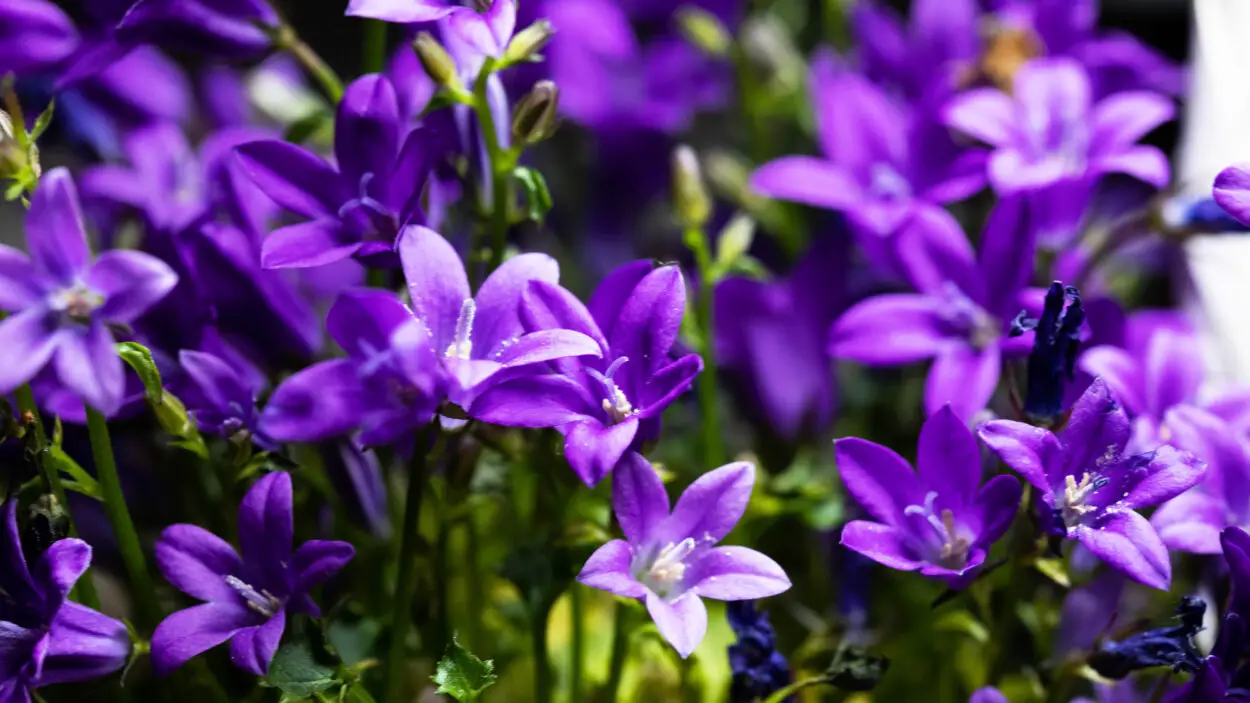
I’m questing through the queue of my most quintessential flowering plants, and I’ve come to quiescence on the letter ‘Q’.
Quickly Find Flowers That Start With Q
1. Queens Crown (Zephyranthes)
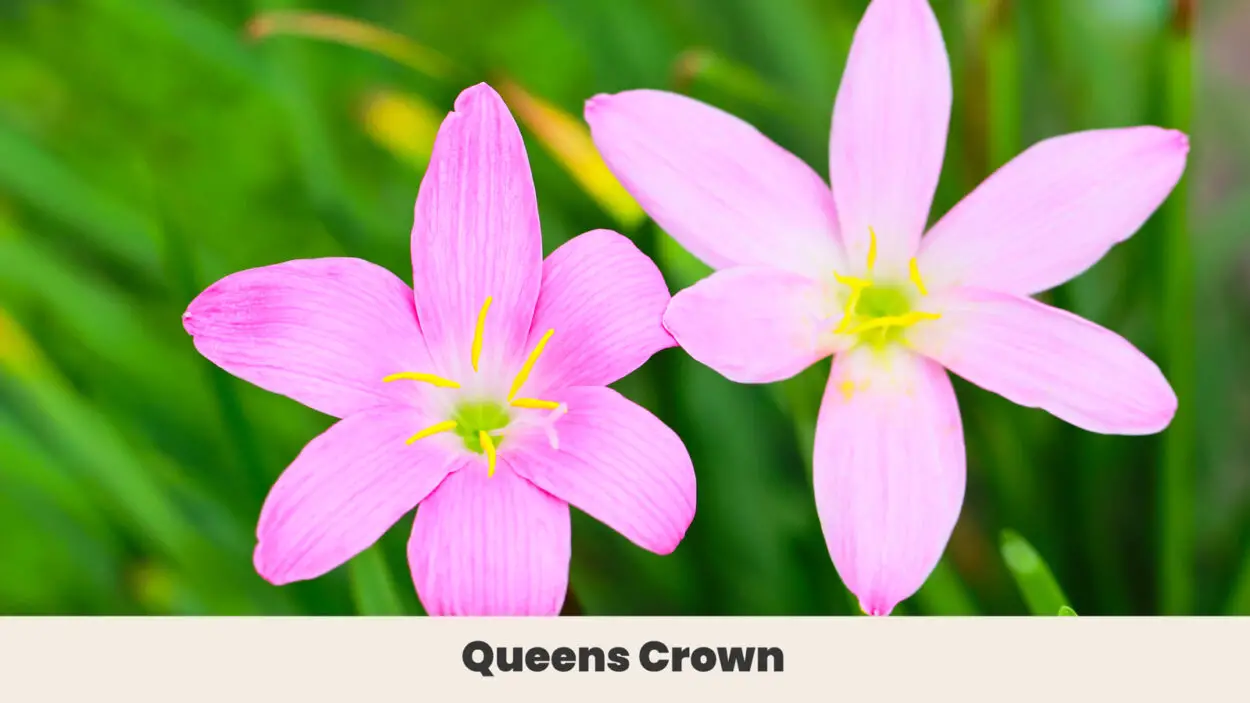
Lucky gardeners in warmer climes sometimes find new blooms of the Queens Crown appearing after spring rains. It earns these sweet flowers one of their common names – rain lily. Each plant sports a single delicate blossom, which depending on the individual species may be white, pink, red or orange.
| Botanical Name: | Zephyranthes |
| Growth Rate: | Slow |
| Native Range: | Southern United States |
| Hardiness Zones: | 7b to 11 |
| Soil Needs: | Most types including wet soils |
| Exposure: | Partial shade |
| Blooming Period: | Spring through fall |
| Water needs: | Low to moderate. Drought resistant |
2. Queen’s Crape Myrtle (Lagerstroemia speciosa)
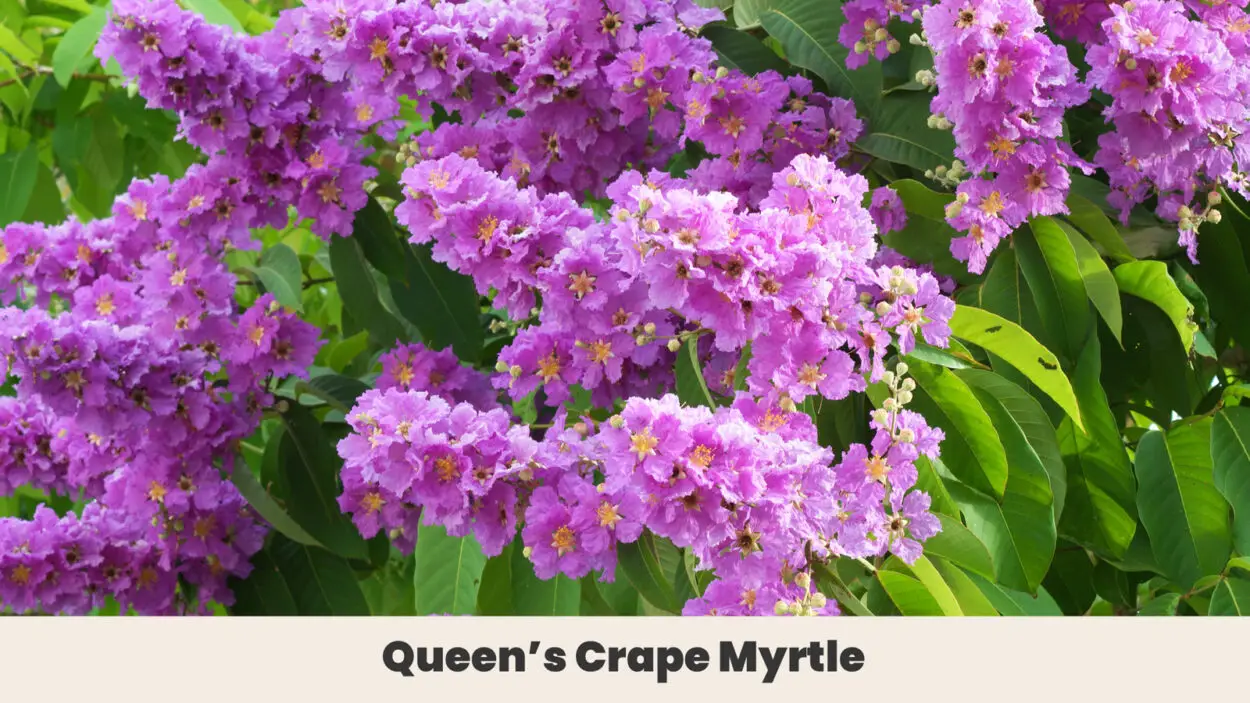
A Queen’s Crape Myrtle in the full flush of flowers is a spectacular sight. These pink flowering trees reach up to fifty or sixty feet in height, with each branch and twig covered in large, almost fluorescent pink or purple flowers. In some forms of Buddhism, it’s said the eleventh Buddha received their Enlightenment beneath its flourishing blooms.
| Botanical Name: | Lagerstroemia speciosa |
| Growth Rate: | Slow |
| Native Range: | Tropical South Asia |
| Hardiness Zones: | 10b to 11b |
| Soil Needs: | All soil types when adequate drainage provided |
| Exposure: | Full sun |
| Blooming Period: | Summer |
| Water needs: | Low to moderate |
3. Queen’s Wreath (Antigonon leptopus)

Also known as Chain of Love for its heart-shaped leaves, the Queen’s Wreath is a creeping vine that produces dustings of delicate pink blooms that cluster fetchingly along its length. It grows vigorously, so wary of where you plant. In some areas it’s classed as an invasive weed and is illegal to grow.
| Botanical Name: | Antigonon leptopus |
| Growth Rate: | Fast |
| Native Range: | Central America |
| Hardiness Zones: | 8a to 11b |
| Soil Needs: | Tolerates most soils |
| Exposure: | Full sun to partial shade |
| Blooming Period: | Spring to Fall |
| Water needs: | Moderate; Drought resistant when established |
4. Queen of the Night (Epiphyllum oxypetalum)

The wide, fragrant blooms of the Queen of the Night are the product of an especially strange cactus. They’re a tropical rainforest plant, more at home climbing a tree than sunning itself in the desert. Get to grips with its unique needs and you’ll be rewarded with a one-night-only show of ghostly white blossoms opening in the moonlight.
| Botanical Name: | Epiphyllum oxypetalum |
| Growth Rate: | Fast |
| Native Range: | Southern Mexico and Central America |
| Hardiness Zones: | 10a to 12b |
| Soil Needs: | Well draining, organically rich sandy or loamy soils |
| Exposure: | Full sun to partial shade |
| Blooming Period: | Spring to summer |
| Water needs: | Moderate |
5. Queens Cup (Clintonia uniflora)

A long-lived but very dainty little plant, the Queens Cup lily is a low-growing wildflower that produces delicate pale white star-shaped flowers. When grown from seed, they can take up to years to flower and will live almost thirty years if cared for well.
| Botanical Name: | Clintonia uniflora |
| Growth Rate: | Slow |
| Native Range: | Mountainous regions of western North America |
| Hardiness Zones: | 4 to 8 |
| Soil Needs: | Organically rich, moist loamy soils |
| Exposure: | Partial to full shade |
| Blooming Period: | Spring to summer |
| Water needs: | Moderate to high |
6. Queen Fabiola (Triteleia laxa)

American native bees love the mauve triple blossoms of the Queen Fabiola lily. They’re drought resistant and make an excellent addition to wildflower displays or pollinator gardens.
| Botanical Name: | Triteleia laxa |
| Growth Rate: | Fast |
| Native Range: | Northern California |
| Hardiness Zones: | 5a to 9b |
| Soil Needs: | Moderate, provide dry soil after blooming |
| Exposure: | Full sun to partial shade |
| Blooming Period: | Spring to summer |
| Water needs: | Moderate, provide dry soil in after blooming |
7. Queen of the Prairie (Filipendula rubra)
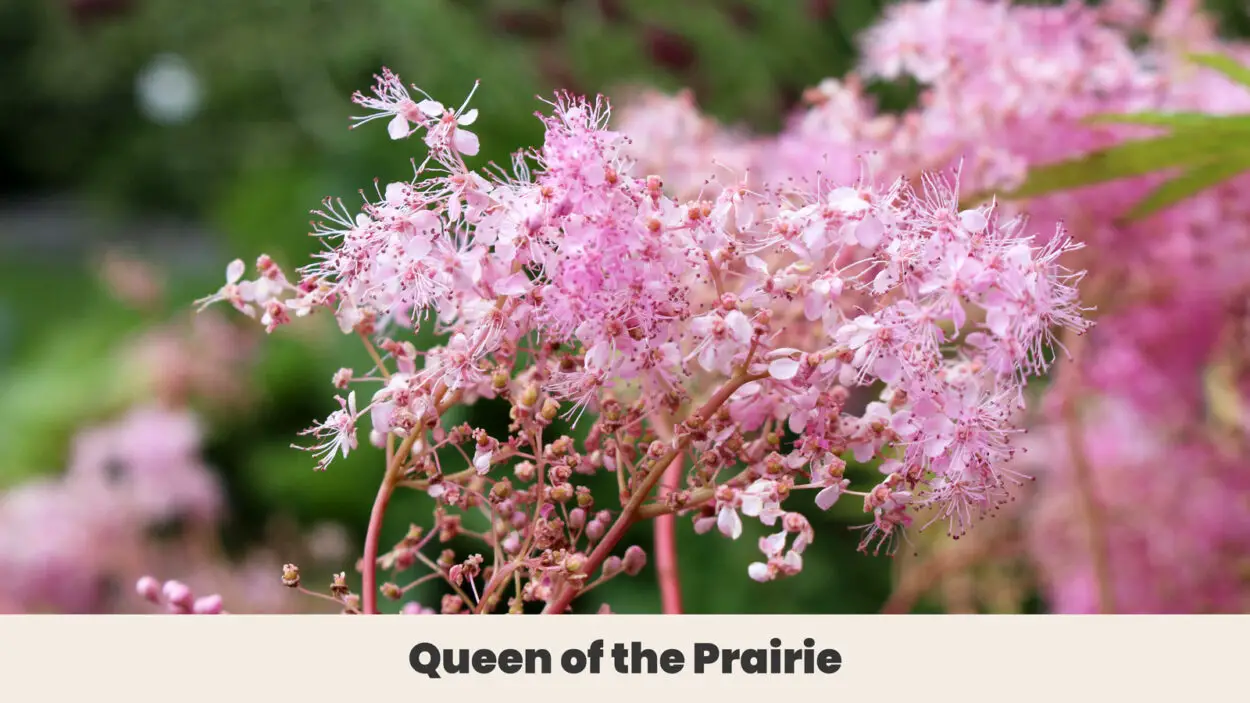
The rosy, frothy flowers of the Queen of the Prairie grow tall and elegantly above a sprawling tangle of sleek green leaves. They’re a truly regal bloom, fragrant and dazzling to butterflies and bees, and are well suited to rain gardens and wildflower beds as they bloom all summer long.
| Botanical Name: | Filipendula rubra |
| Growth Rate: | Moderate |
| Native Range: | Eastern United States |
| Hardiness Zones: | 3 to 8 |
| Soil Needs: | Rich soils with abundant organic matter |
| Exposure: | Full sun to partial shade |
| Blooming Period: | Summer |
| Water needs: | Moderate to high |
8. Queen’s Tears (Billbergia nutans)
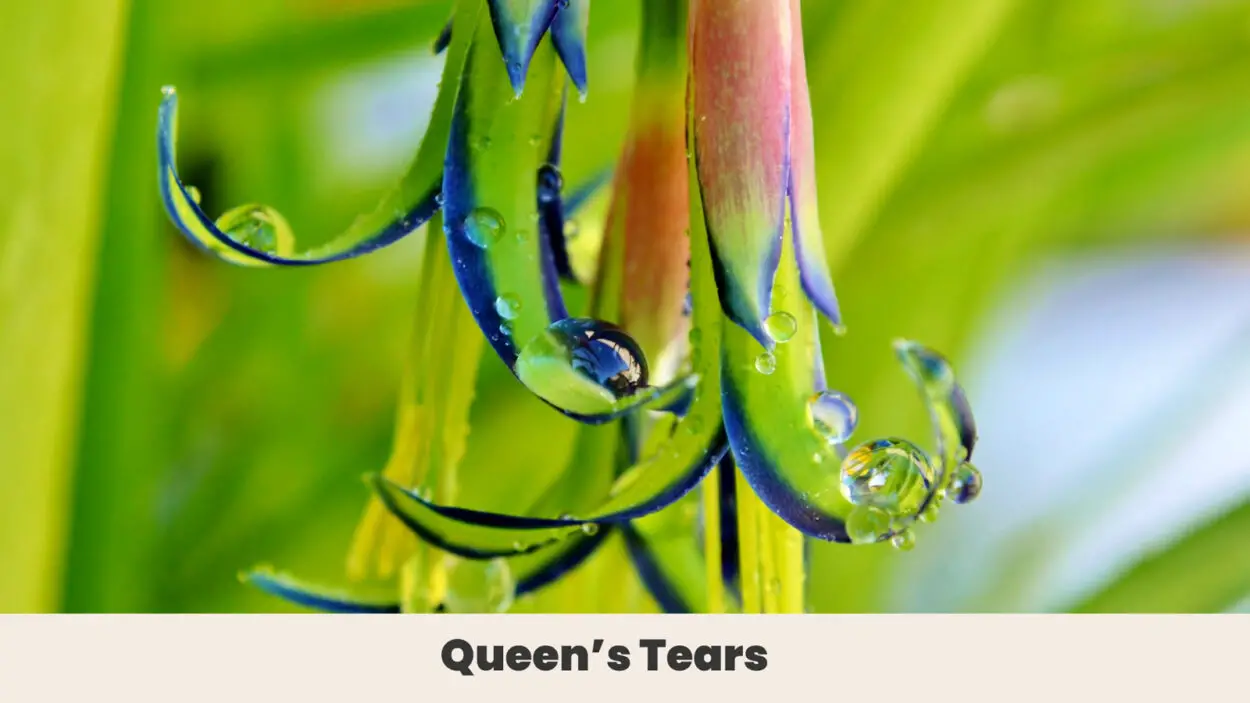
So abundant is the nectar of this plant that it drips from the flowers if they are touched, giving it the name Queen’s Tears. It’s a bromeliad with a long elegant cluster of triple-colored flowers.
Most are green pink and purple, with a fetching magenta sheath from which the flowers sprout. It’s also known as the Friendship Plant, because it pups with such frequency there’s always enough to go round.
| Botanical Name: | Billbergia nutans |
| Growth Rate: | Slow |
| Native Range: | Southern Brazil |
| Hardiness Zones: | 8a to 11 |
| Soil Needs: | Loose, free-draining soils |
| Exposure: | Partial sun to full shade |
| Blooming Period: | Summer |
| Water needs: | Moderate to high |
9. Quince flower (Chaenomeles speciosa)
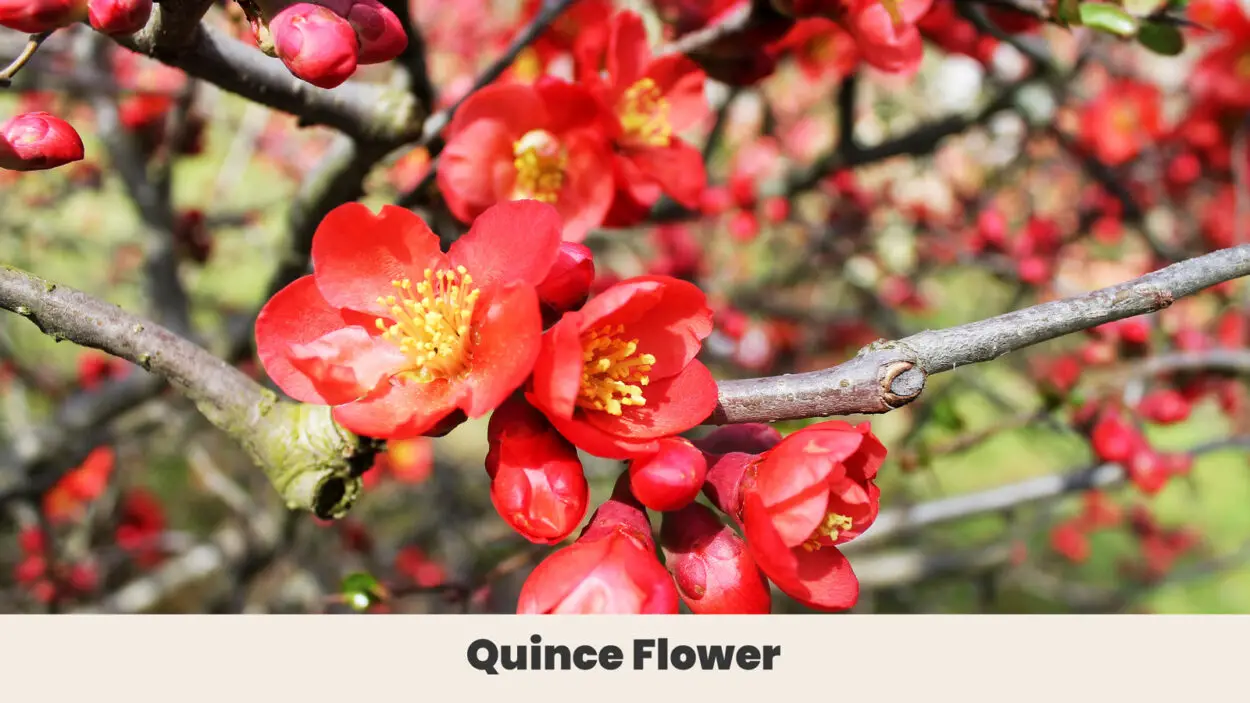
Also known as flowering quince, Chinese quince or Japanese quince is a beautiful red flowering tree that will bear fruit. This plant is an elegant shrub that can reach ten feet tall or more. It produces round open flowers in reds or pinks at the tips of its branches.
Each collection of six to twelve flowers generally appears before the leaves. It’s been known to flower as early as midwinter, though typically it starts its blooming season in spring.
| Botanical Name: | Chaenomeles speciosa |
| Growth Rate: | Medium |
| Native Range: | China |
| Hardiness Zones: | 4a to 8b |
| Soil Needs: | Most types provided moisture is maintained |
| Exposure: | Full sun to partial shade |
| Blooming Period: | Winter to spring |
| Water needs: | Moderate |
10. Queen Anne’s Lace (Daucus carota)
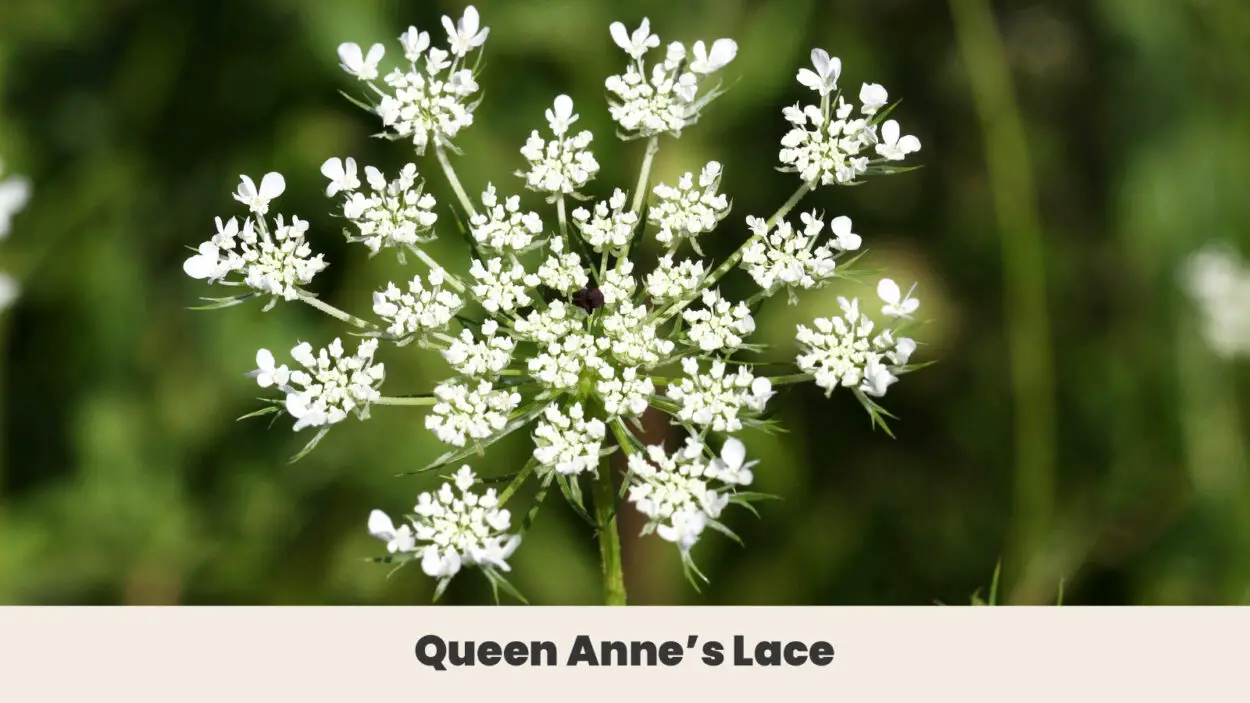
Often mistaken as a weed with white flowers, the Queen Anne’s Lace is well known and much beloved for its frothy clusters of tiny snow-white blooms. It’s a close relative of the carrot, with similar fine feathery leaves. It’s a common sight in many meadows and roadsides and serves as a food source for many caterpillars, butterflies, and bees.
| Botanical Name: | Daucus carota |
| Growth Rate: | Fast |
| Native Range: | Europe |
| Hardiness Zones: | 4a to 11b |
| Soil Needs: | All soil types |
| Exposure: | Full sun to partial shade |
| Blooming Period: | Spring, second year only |
| Water needs: | Low to moderate |
11. Queen of the Meadow (Filipendula ulmaria)

The Queen of the Meadow lives up to her name with vigorous growth and vivacious white bracts of tiny white flowers. It’s a favorite of pollinators, but be cautious when planting. It’s considered an invasive weed in many parts of the United States, a conqueror more than a queen.
| Botanical Name: | Filipendula ulmaria |
| Growth Rate: | Fast |
| Native Range: | Europe, Western Asia |
| Hardiness Zones: | 3 to 9 |
| Soil Needs: | All soil types provide moisture needs are met |
| Exposure: | Full sun to partial shade |
| Blooming Period: | Summer |
| Water needs: | Moderate to high |
Final thoughts
Queenly Q blooms to quench a quiet desire. Their quality is beyond question, without quibbles or qualms. It’s worth a query to qualify the best bloom for your quarter!

